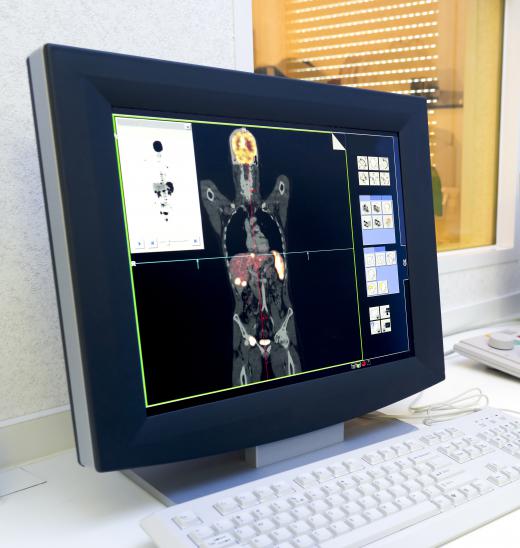What is a Positron?
 Michael Anissimov
Michael Anissimov
A positron is the antimatter equivalent of an electron. Like the electron, the positron has a spin of ½, and an extremely low mass (about 1/1836 of a proton). The only differences are its charge, which is positive rather than negative (hence the name), and its prevalence in the universe, which is much lower than that of the electron. Being antimatter, if a positron comes in contact with conventional matter, it explodes in a shower of pure energy, bombarding everything in the vicinity with gamma rays.
Like electrons, positrons respond to electromagnetic fields, and can be kept contained using confinement techniques. They can couple together with antiprotons and antineutrons to make antiatoms and antimolecules, though only the simplest of these have ever been observed. Positrons exist in a low density throughout the cosmic medium, and antimatter harvesting techniques have even been proposed to exploit their energy.

The positron's existence was first postulated by the famous physicist Paul Dirac in 1930, and discovered only two years later, in 1932, in a particle accelerator experiment. Because they are small and react to magnetic fields, positrons are just as susceptible to being used in particle accelerator experiments as electrons are.
Today, positrons are used most frequently in positron emission tomography, where a small amount of radioisotope with a short half-life is injected into a patient, and after a small waiting period, the radioisotope concentrates in the tissues of interest and begins breaking down, releasing positrons. These positrons travel a few millimeters in the body before colliding with an electron and releasing gamma rays, which can be picked up by the scanner. This is used for a variety of diagnostic purposes, to study the brain, or to trace the movement of a drug throughout the body.
Futuristic proposed applications of positrons include antimatter warfare and energy production. However, both applications are not especially likely to be used widely, because of their indiscriminate effect in warfare - modern warfare is more about precision - and radioactive emissions similar to nuclear bombs. Unless extremely efficient means of harvesting positrons from space are developed, positrons are not likely to be used for energy, because it takes almost as much energy to create them as what would be extracted from annihilating them with conventional matter.
AS FEATURED ON:
AS FEATURED ON:











Discussion Comments
So where do positrons come from? Are they from the quantum sea? What is the half-life of a positron assuming it doesn't contact an electron or any other particle of visible matter?
Positrons aren't located in matter atoms. If they were anywhere near them, they'd either be attracted to the atom's electrons, collide with them, and explode, since they're antimatter, or they'd be repelled by the protons.
In antimatter atoms, I assume they'd behave much like protons in matter atoms, orbiting the nucleus.
This is all guesswork, though, because I have not formally studied antimatter yet.
you are evading the question. Where is the positron located in the atom?
but what is the main difference between a proton and a positron?
an positron is non -fundamental particle of a atom, found rarely in nature..its mass is 9.1*10 raise to power -28 grams, whereas mass of a proton is 1.67*10 raise -24 grams. mind you that the mass of proton is 1837 times that of a positron.
where is a positron situated in an atom or any other place? what is the difference between proton and positron?
A positron is an anti-electron, which is rare in nature, whereas a proton is a massive particle in the atomic nucleus, and it is common.
what is the difference between a positron and a proton?
Post your comments